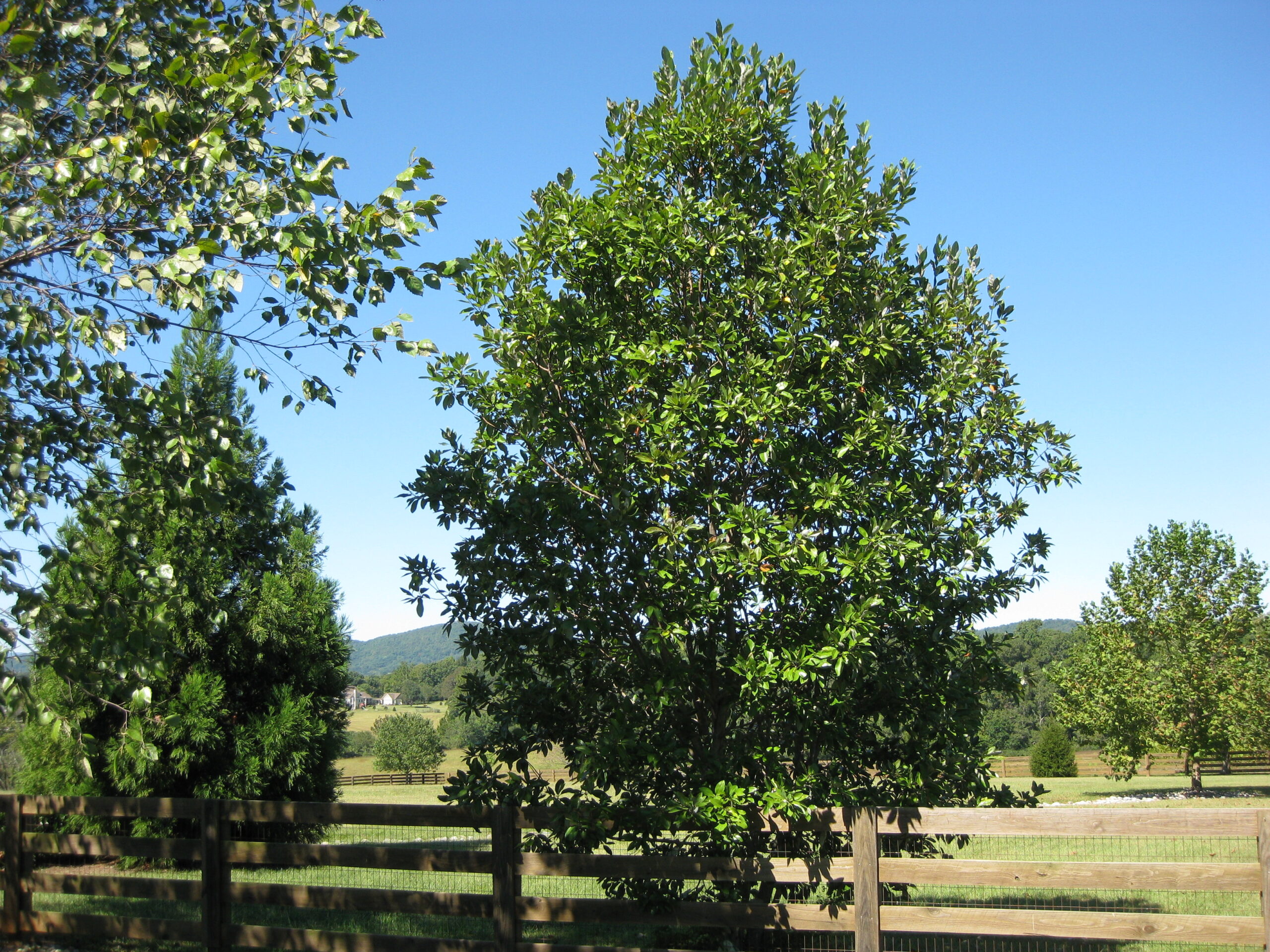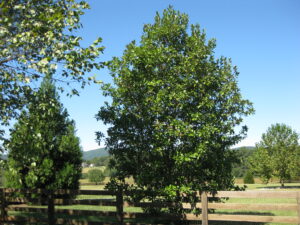The Sweetbay Magnolia, scientifically known as Magnolia virginiana, is a deciduous or semi-evergreen tree or shrub native to the southeastern United States. It belongs to the Magnoliaceae family and is known for its attractive, fragrant flowers and glossy foliage. Here are some key characteristics and information about the Sweetbay Magnolia:
- Appearance: Sweetbay Magnolias typically grow to heights of 10 to 60 feet (3 to 18 meters) tall, depending on their location and growing conditions. They have a conical or pyramidal shape with a dense canopy of glossy, dark green leaves.
- Leaves: The leaves of Sweetbay Magnolia are elliptical or oblong, 2 to 6 inches long, and have a shiny surface with a silvery-gray underside.
- Flowers: One of the most notable features of the Sweetbay Magnolia is its fragrant, creamy-white flowers. These flowers have a pleasant, lemony scent and can measure 2 to 4 inches (5 to 10 centimeters) in diameter. They bloom in late spring to early summer, attracting pollinators like bees and butterflies.
- Fruit: After flowering, Sweetbay Magnolias produce cone-like structures known as aggregate fruits. These fruits contain small red seeds, which are a food source for various birds and wildlife.
- Habitat: Sweetbay Magnolias are commonly found in wetland areas, swamps, and along the edges of ponds and streams. They thrive in moist, acidic soils but can adapt to a variety of soil conditions.
- Cultural Significance: Native American tribes and early European settlers used various parts of the Sweetbay Magnolia for medicinal purposes, including treatments for fever and digestive issues. The tree’s fragrant flowers and attractive foliage also make it a popular ornamental plant in gardens and landscapes.
- Wildlife Value: The Sweetbay Magnolia provides habitat and food for various wildlife species. In addition to birds, it can attract butterflies and other pollinators, enhancing biodiversity in the ecosystem.
- Hardiness: Sweetbay Magnolias are hardy in USDA plant hardiness zones 5 to 10, making them suitable for a wide range of climates in the southeastern United States and along the East Coast.
If you plan to grow a Sweetbay Magnolia in your garden or landscape, be sure to provide it with a well-draining, acidic soil and adequate moisture, as it thrives in moist conditions. Its fragrant blooms and graceful appearance can add beauty and charm to any outdoor space.








